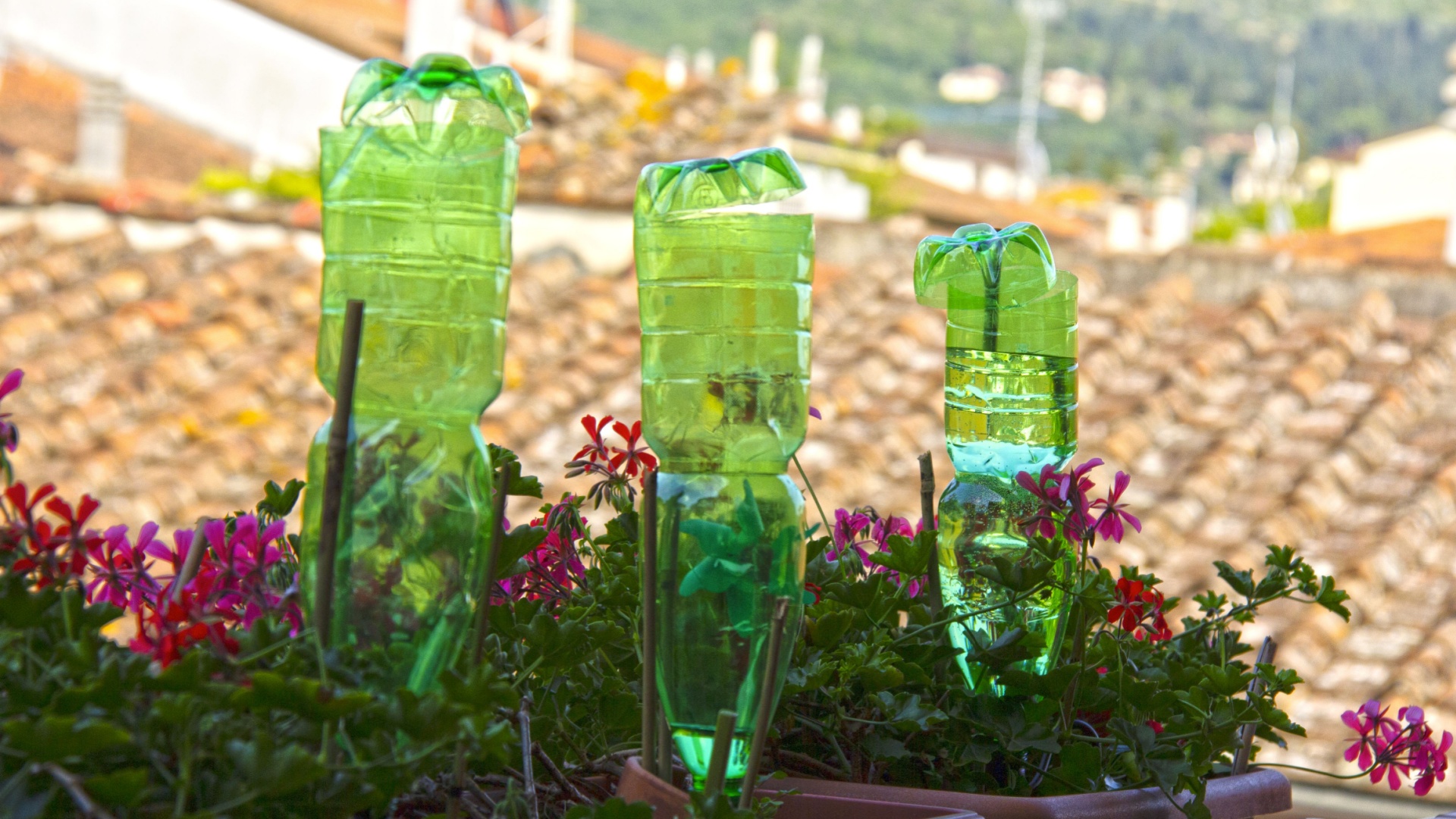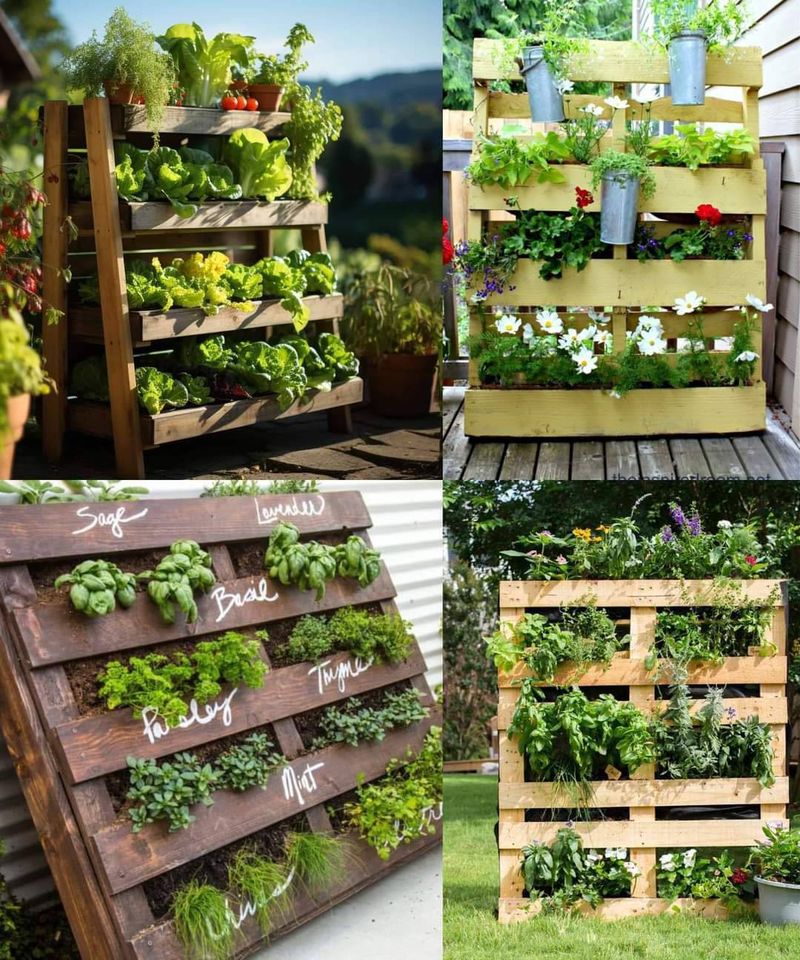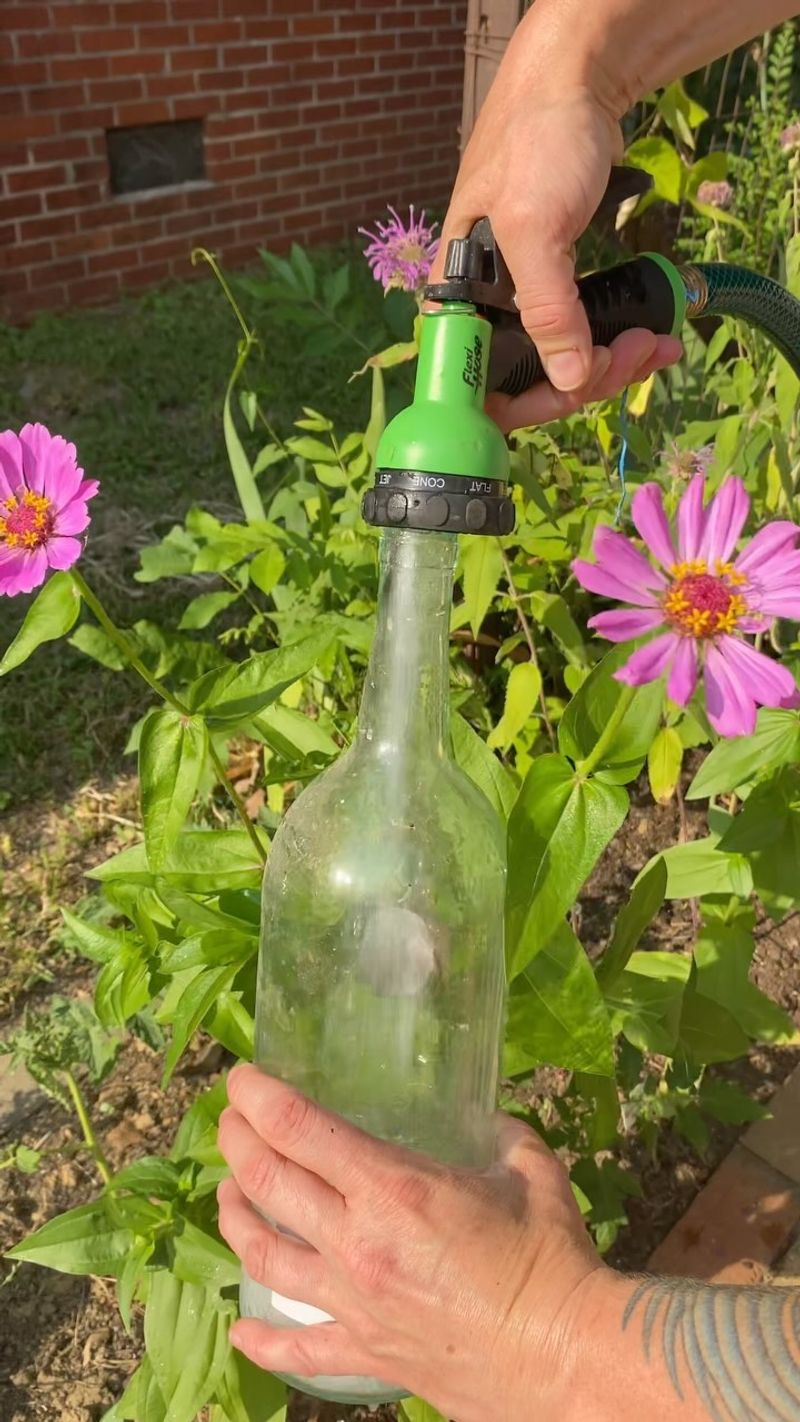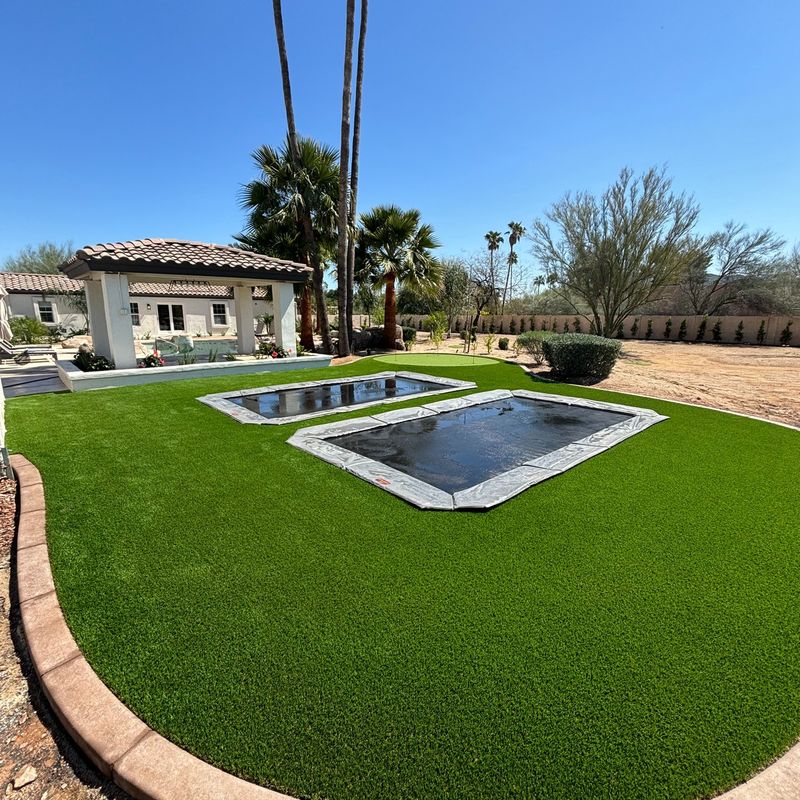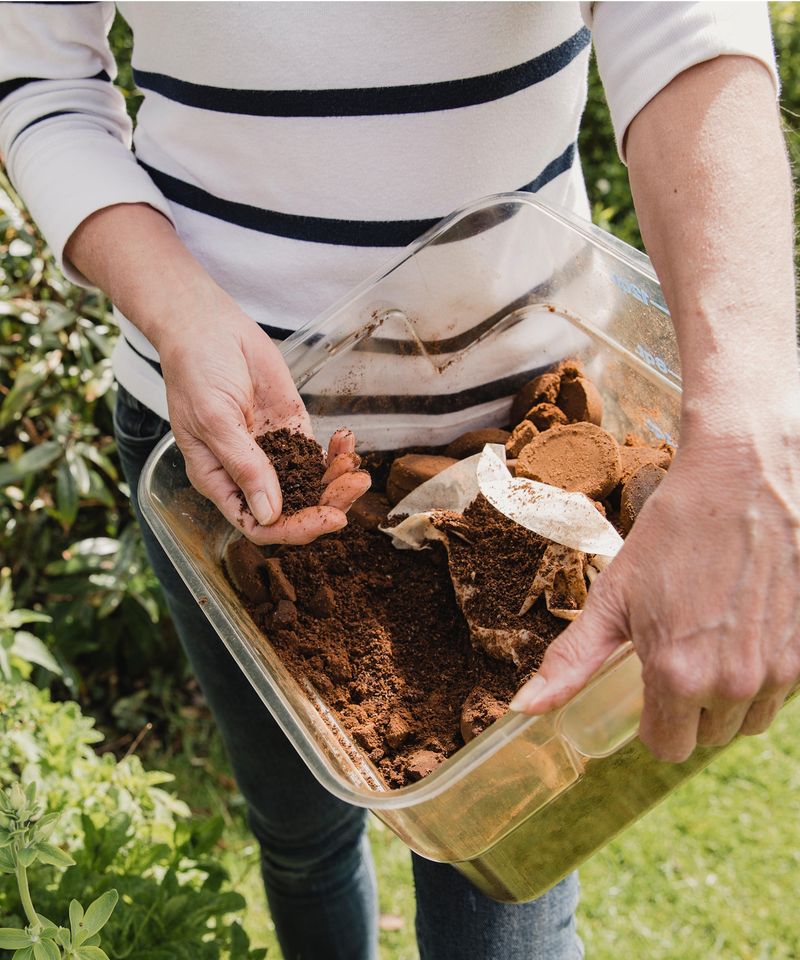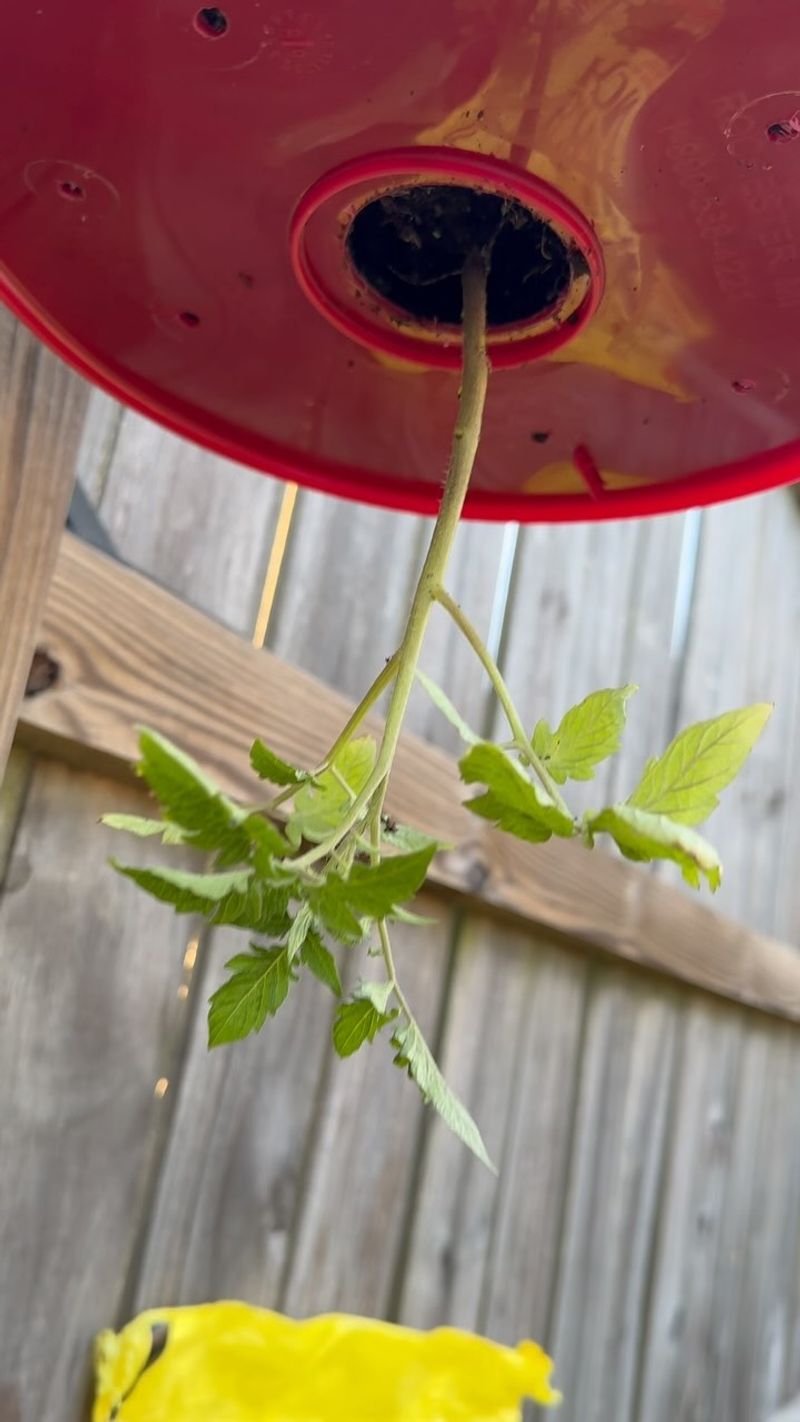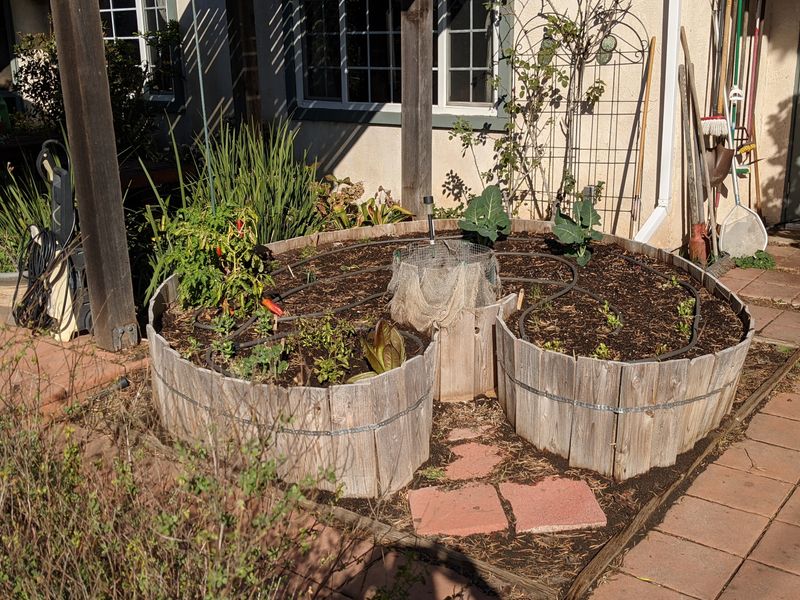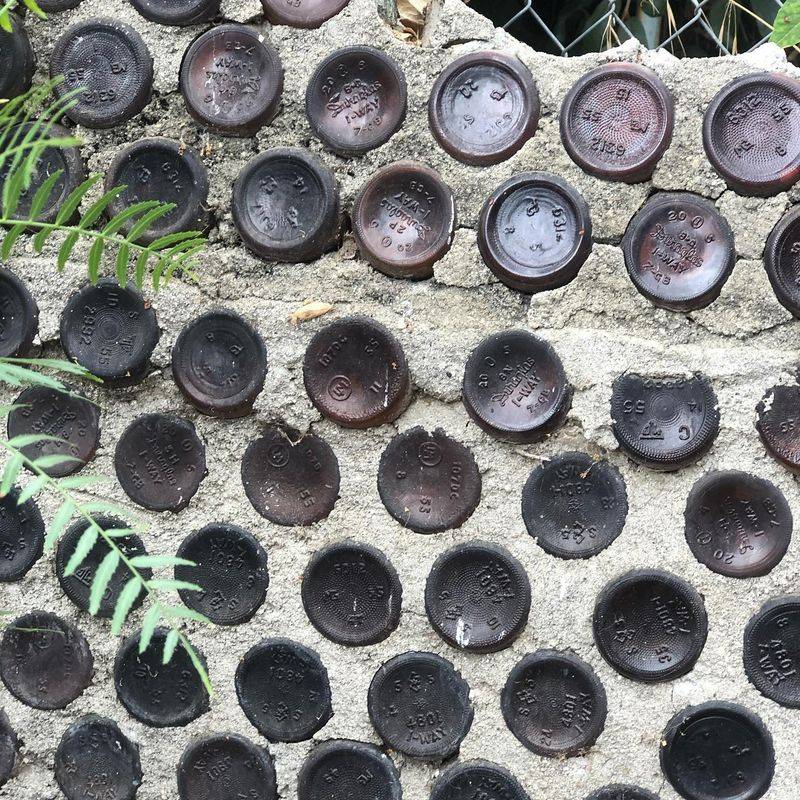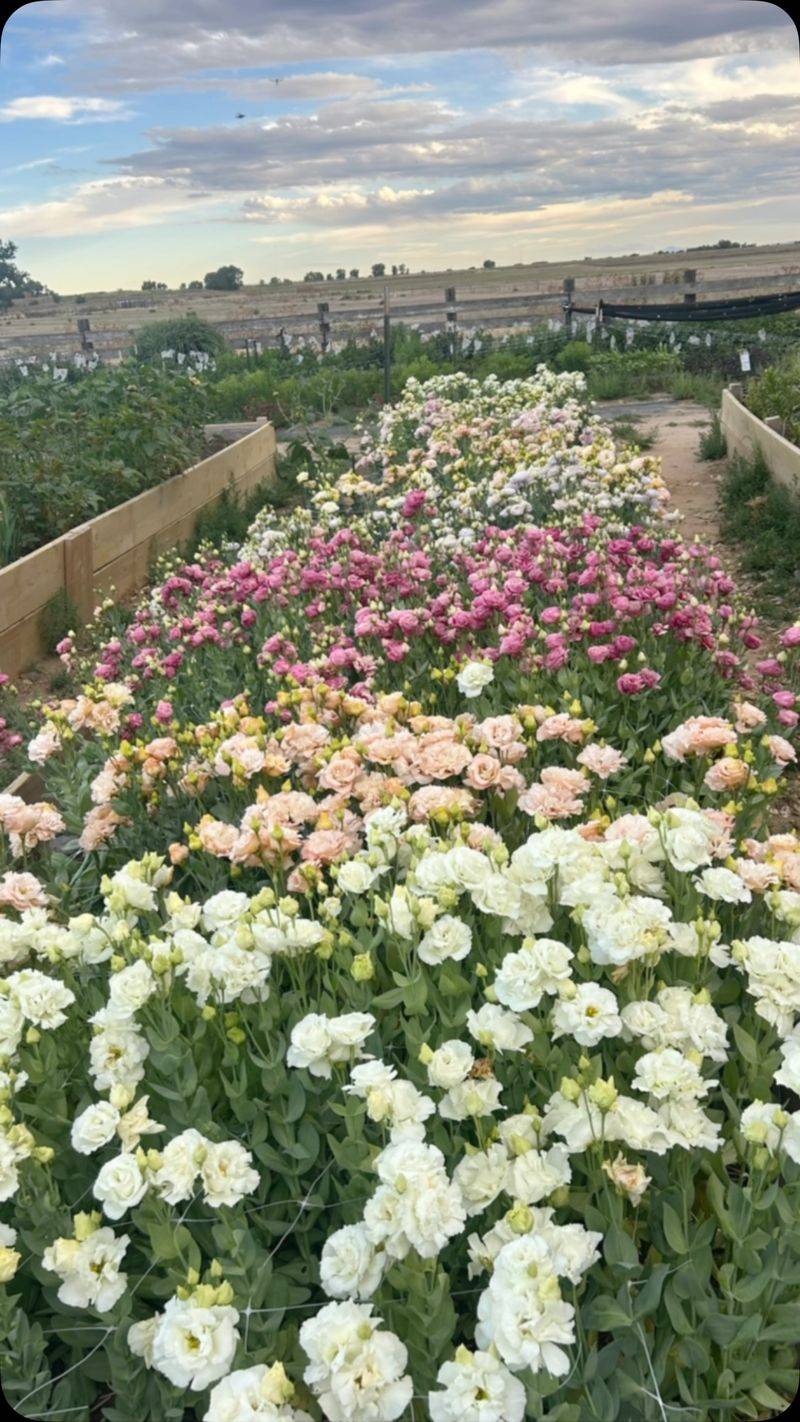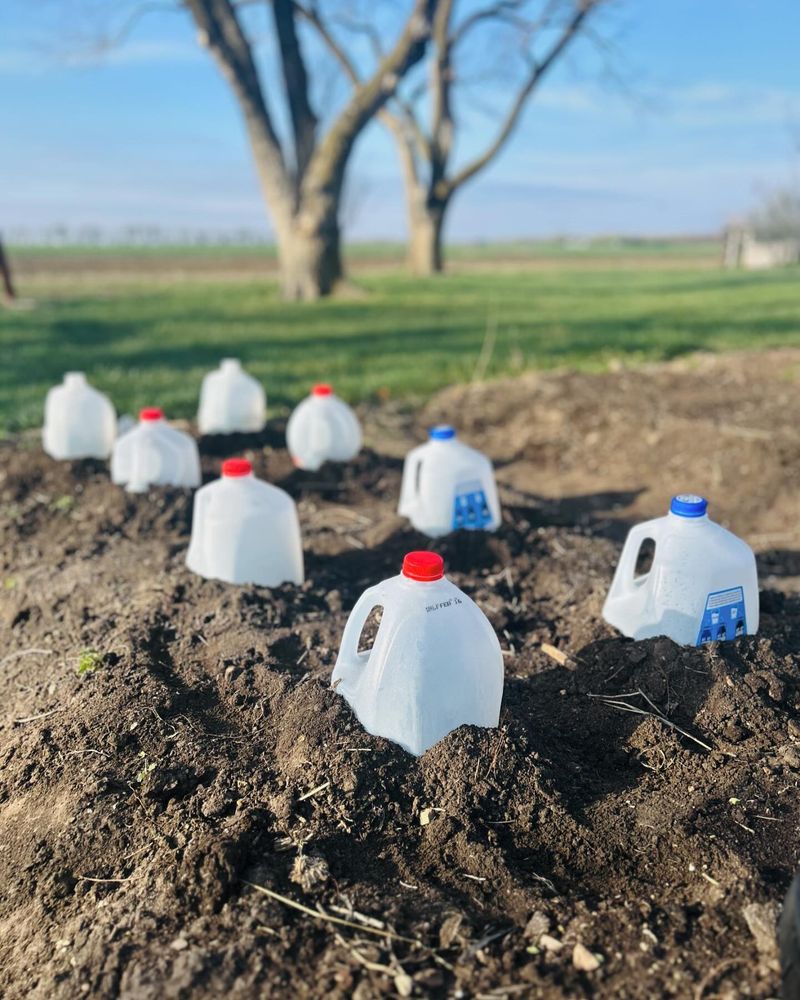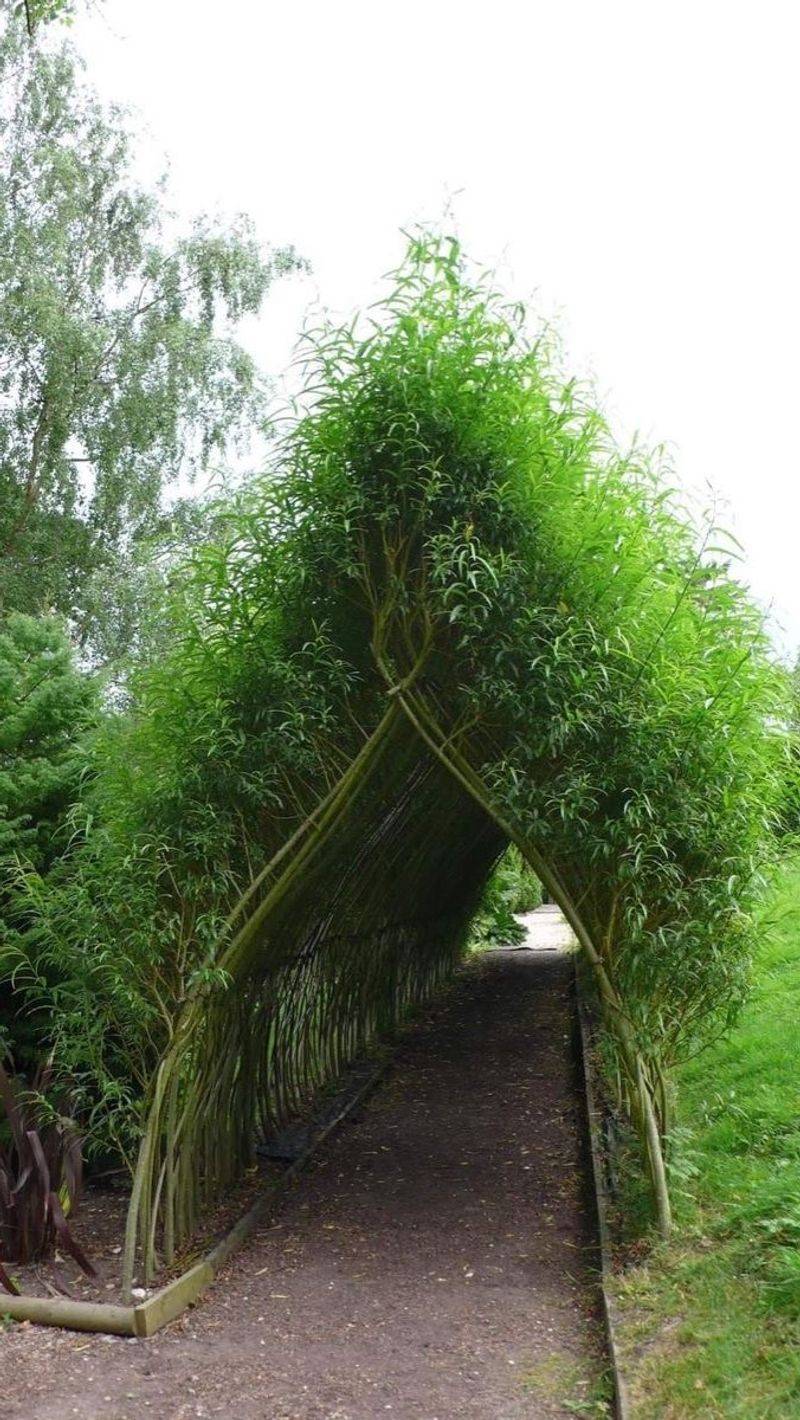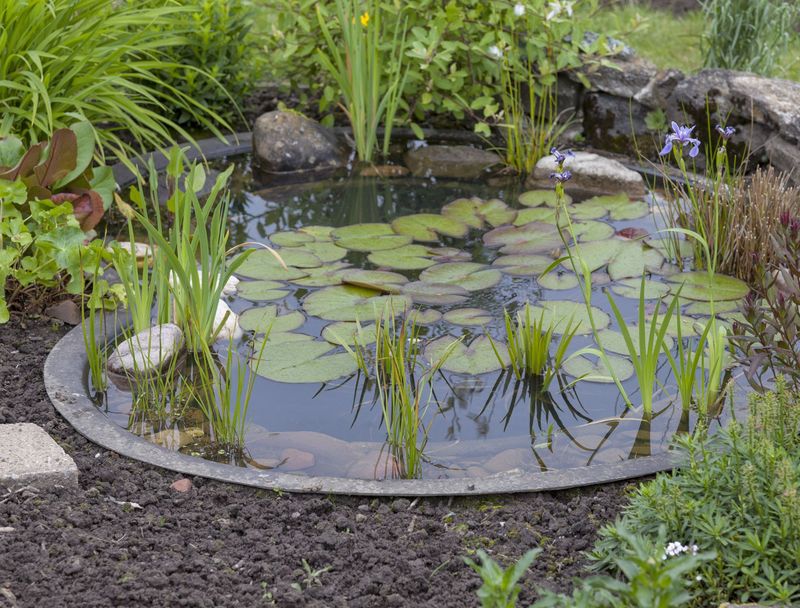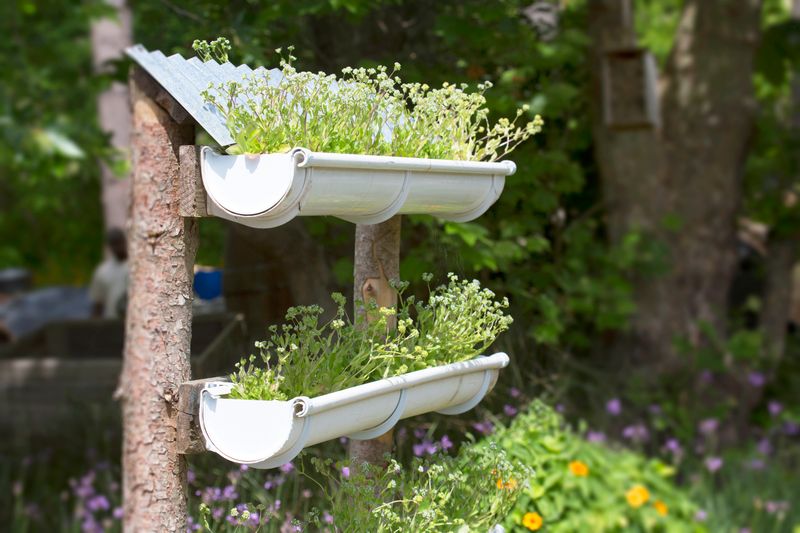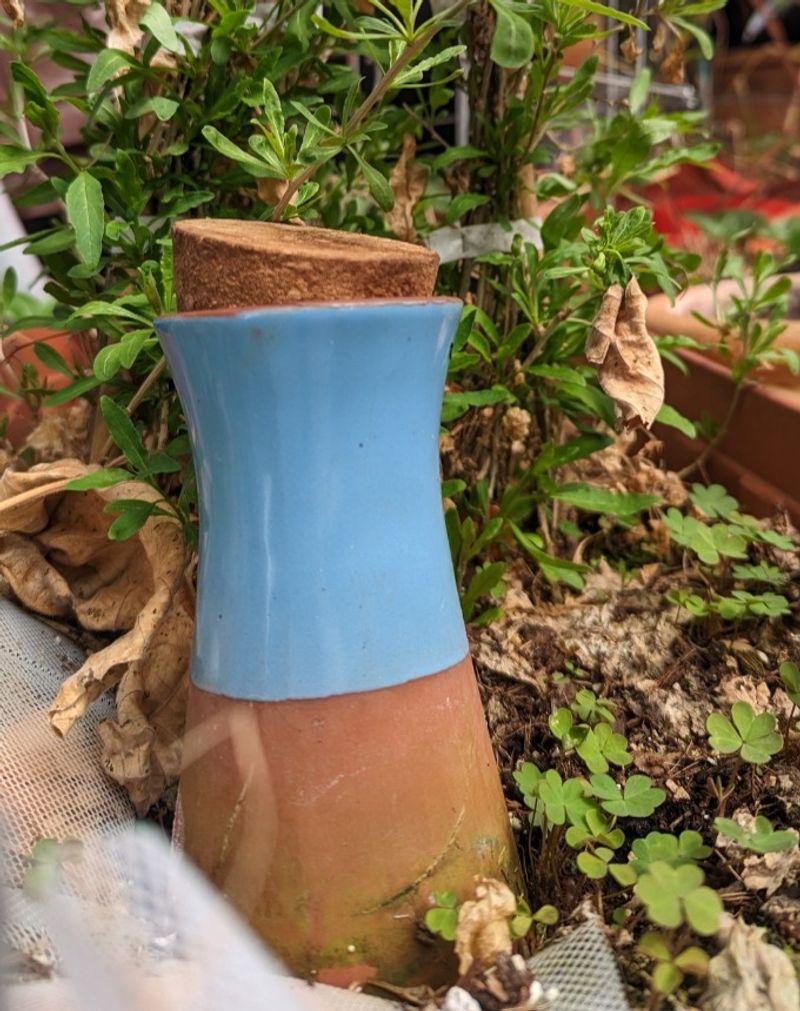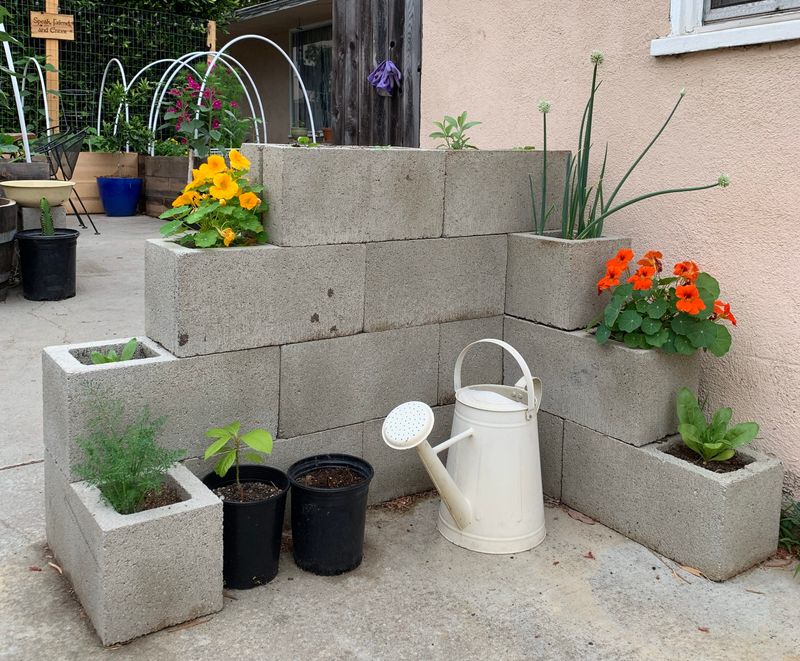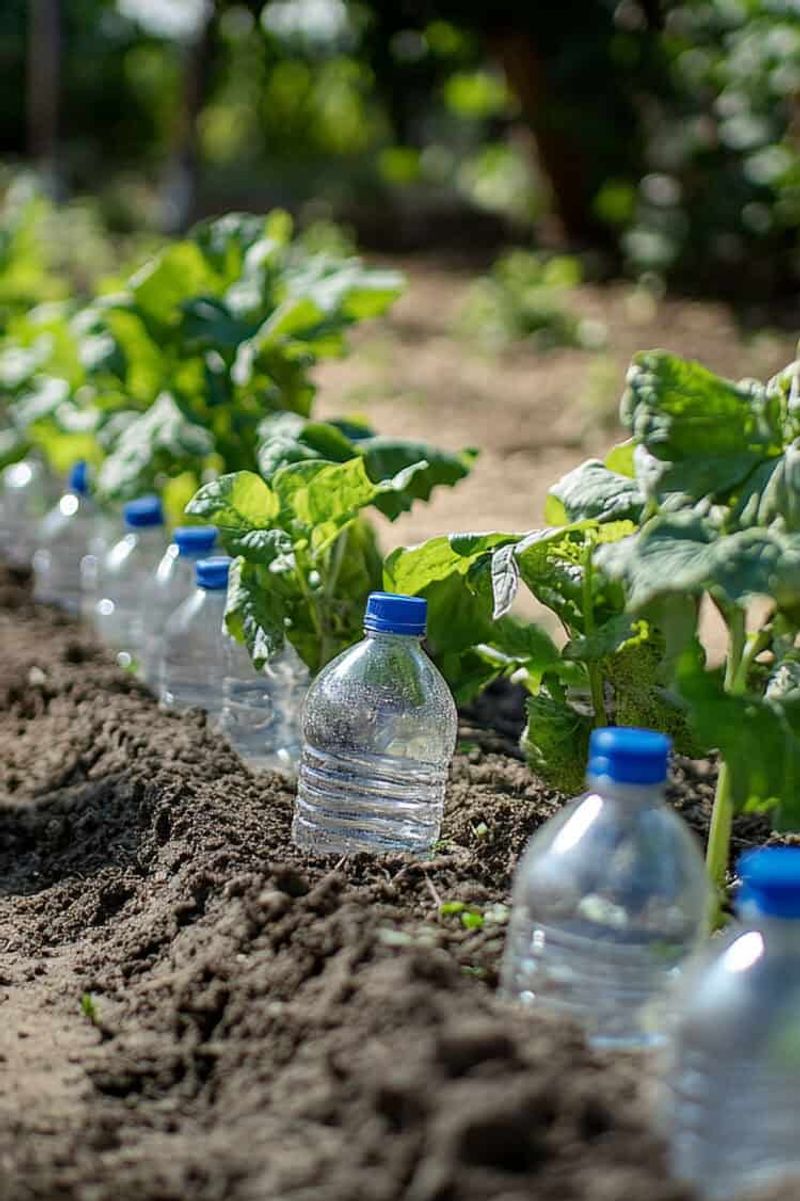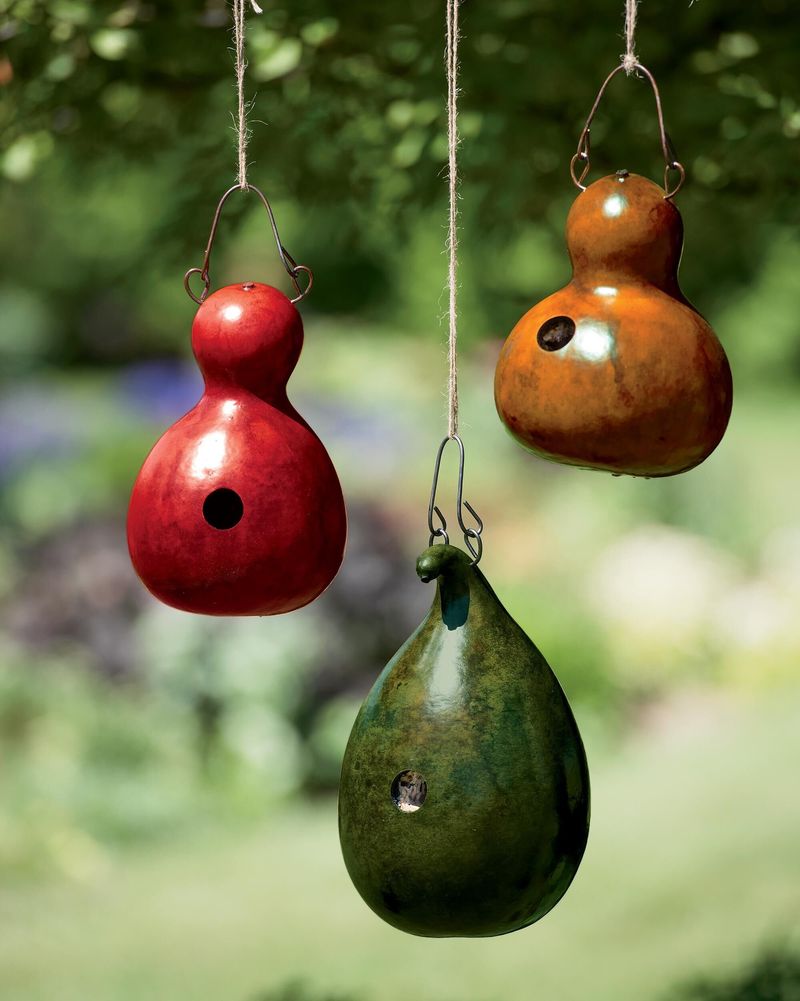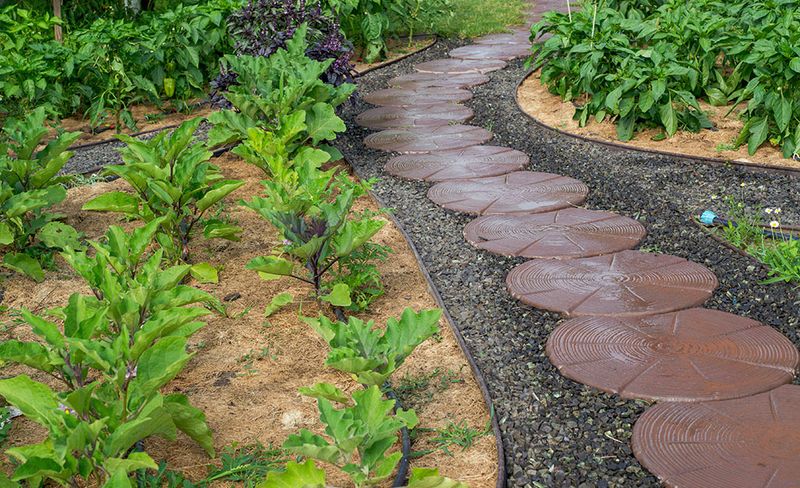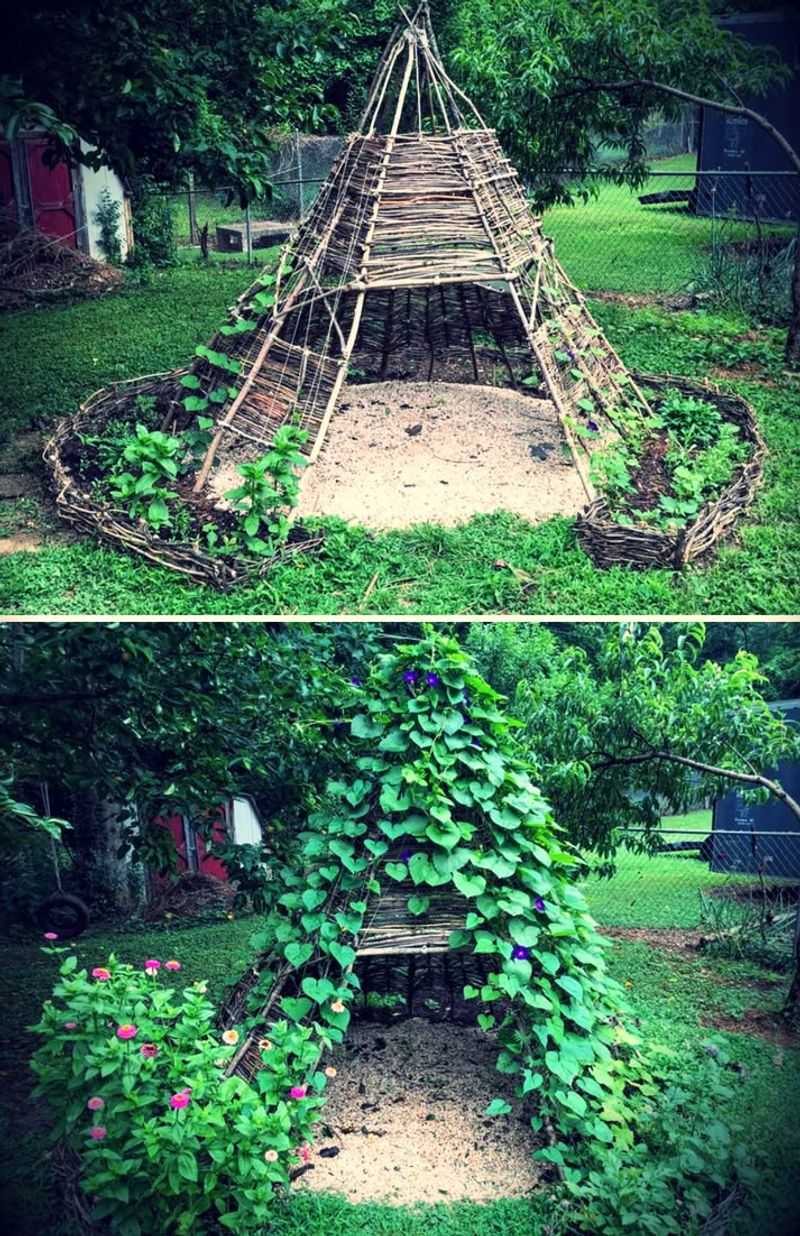Green thumbs aren’t born—they’re made with a little creativity and a lot of clever tricks. These weirdly brilliant garden hacks aren’t in your average how-to guide, but they pack a punch when it comes to saving time, space, and sanity.
From oddball fixes to genius shortcuts, you’ll wonder how you ever gardened without them.
1. Vertical Pallet Gardens
Old wooden pallets transformed into living walls save tremendous space in small yards. Simply stand a pallet upright, staple landscape fabric to the back, fill with soil, and plant through the slats. Perfect for growing herbs and shallow-rooted vegetables, these vertical gardens keep plants off the ground away from slugs and other crawling pests.
Plus, they add a rustic charm to bland walls or fences while utilizing otherwise wasted vertical space.
2. Wine Bottle Irrigation System
Empty wine bottles become self-regulating watering devices when flipped upside down in soil near thirsty plants. Fill each bottle with water, quickly flip it, and push the neck a few inches into the soil beside your plants.
The water releases slowly as the soil dries out, delivering moisture directly to roots. For vacation time, this trick ensures plants stay hydrated for days without attention. Colored bottles add unexpected garden art while solving the eternal watering dilemma.
3. Sunken Trampoline Play Area
Rather than having an eyesore trampoline dominating your backyard, consider digging a circular pit and installing it at ground level. The surrounding soil supports the structure while eliminating the need for a safety enclosure.
Children can easily climb on and off without ladders, reducing fall risks. During off-seasons, cover it with a custom-made lid planted with sedums to create a decorative feature. The sunken design blends seamlessly with landscaping while solving multiple safety and aesthetic issues.
4. Coffee Ground Slug Barriers
Used coffee grounds create natural barriers that slugs and snails refuse to cross. The grounds’ rough texture irritates their soft bodies, while the caffeine acts as a natural repellent. Simply collect grounds from your morning brew and sprinkle them in rings around vulnerable plants like hostas and lettuce.
The grounds pull double duty by gradually adding nitrogen to your soil as they break down. This free solution turns a daily waste product into garden protection.
5. Upside-Down Tomato Planters
Plastic buckets with holes cut in the bottom become perfect hanging tomato gardens. Plant seedlings through the holes so they grow downward, then fill the bucket with soil and hang from sturdy supports. The unusual growing position naturally prevents many fungal problems since foliage stays drier.
Fruits hang freely without touching soil, reducing rot and pest damage. The bucket tops remain open for planting herbs or flowers, effectively doubling your growing space in tight quarters.
6. Keyhole Garden Beds
Shaped like old-fashioned keyholes, these raised beds feature a center compost column with a notch for easy access. The circular design maximizes growing space while minimizing the area needed for tending plants. Simply toss kitchen scraps and water into the central basket, which breaks down and feeds surrounding plants.
The clever shape allows you to reach every plant without stepping on soil, preventing compaction. Originally developed for drought-prone regions, keyhole gardens use 80% less water than conventional beds.
7. Bottle Brick Pathways
Glass bottles buried neck-down create magical light-catching pathways that solve multiple garden problems. Push bottles into prepared sand beds, then secure with concrete or mortar between the bottle bases which form the walking surface.
The pathway provides solid footing in muddy areas while allowing water drainage. Sunlight creates a stained-glass effect as it passes through colored bottles. Made from items that would otherwise enter landfills, these paths offer an eco-friendly alternative to expensive stone or brick walkways.
8. Hugelkultur Mounds
These permaculture wonders start with buried logs and branches topped with compost, soil, and plants. The decomposing wood acts like a sponge, storing rainwater for dry spells and gradually releasing nutrients.
Hugel beds solve drainage issues in wet areas while requiring virtually no irrigation once established. The slightly raised profile provides better growing conditions and extends the planting season. Best of all, they transform yard waste into garden gold instead of hauling it away.
9. Milk Jug Mini-Greenhouses
Empty plastic milk jugs with bottoms cut out become perfect individual plant protectors in early spring. Place these makeshift cloches over seedlings and press slightly into soil to anchor them. The transparent plastic creates a warm microclimate that protects tender plants from frost and cold winds.
Remove caps during warm days to prevent overheating, then replace for overnight protection. Gardeners can start plants weeks earlier than usual while recycling containers that would otherwise be trash.
10. Living Willow Structures
Fresh willow branches pushed into moist soil will root and grow, allowing you to create living fences, tunnels, or domes. Weave and tie the flexible stems into your desired shape while they’re dormant in winter. By spring, they’ll leaf out and continue growing in the arranged pattern.
These structures solve privacy and shade issues while creating magical play spaces for children. The living willow requires occasional pruning but becomes stronger each year as branches thicken and intertwine.
11. Tire Pond Gardens
Old tires become instant water gardens when lined with plastic and filled with water. Stack several tires for deeper ponds or use single tires for shallow water features that attract beneficial wildlife. Paint the outside of tires with exterior paint or cover with bamboo or reed screening for a more natural look. The rubber provides excellent insulation, keeping water temperatures more stable than in-ground ponds. This solution recycles waste materials while creating habitats for frogs and beneficial insects.
12. Gutter Gardens
Vinyl rain gutters mounted on fences or walls create space-saving planters perfect for shallow-rooted crops like lettuce, strawberries, and herbs. Drill drainage holes every few inches, cap the ends, and fill with lightweight potting mix.
The narrow profile allows for gardening in the smallest spaces while keeping plants at a comfortable working height. Multiple gutters can be staggered for a cascading effect. For apartment dwellers, balcony railings become prime growing real estate with this clever hack.
13. Buried Clay Pot Irrigation
Unglazed terracotta pots buried up to their rims create effortless deep watering systems for garden beds. Plug the drainage hole with a cork, place the pot in your garden, and fill with water. The porous clay slowly releases moisture into surrounding soil, encouraging deep root growth.
Plants become more drought-resistant since water goes directly to roots instead of evaporating from the surface. One pot can irrigate several nearby plants, dramatically reducing water consumption during hot summer months.
14. Cinder Block Herb Garden
Concrete blocks with their characteristic holes create instant planters when arranged in patterns. Each cavity becomes a perfect growing space for individual herb plants or flowers when filled with potting soil. The blocks can form raised beds, retaining walls, or freestanding planters depending on your needs.
The concrete absorbs heat during the day and releases it overnight, creating ideal conditions for Mediterranean herbs like rosemary and thyme. This industrial material brings unexpected order and structure to garden spaces.
15. Banana Peel Fertilizer Spikes
Dried banana peels become powerful fertilizer spikes when buried near hungry plants. Simply dry peels until leathery, cut into pieces, and push them a few inches into the soil around roses, tomatoes, or peppers. The peels slowly release potassium, phosphorus, and calcium as they decompose.
Plants produce more flowers and fruit with this free nutrient boost. For houseplants, bury small pieces just under the soil surface to revive yellowing leaves without chemical fertilizers.
16. Soda Bottle Drip Irrigation
Plastic soda bottles become precision watering tools with a few small holes poked in their caps. Fill bottles with water, screw on the modified cap, and flip them upside down next to plants. The water slowly drips directly to roots, eliminating runoff and evaporation.
For tomatoes and other deep-rooted plants, bury bottles with just the bottom exposed for filling. The controlled delivery system reduces water use by up to 50% while keeping foliage dry to prevent fungal diseases.
17. Gourd Birdhouses
Growing hard-shell gourds specifically for birdhouses solves both garden pest problems and provides creative projects. Plant gourd vines on trellises, allow fruits to mature fully, then harvest and dry for several months.
Cut an appropriate-sized entrance hole, hollow out the dried gourd, and hang it to attract insect-eating birds. Different hole sizes attract different species, from tiny wrens to larger bluebirds. The natural houses blend beautifully into garden settings while recruiting birds that consume thousands of garden pests.
18. Carpet Mulch Pathways
Old wool or natural fiber carpets laid upside down become instant weed-suppressing pathways. The dense backing blocks light from reaching weed seeds while allowing water to penetrate to the soil below. Cover with a layer of wood chips or gravel for an attractive finish.
Unlike landscape fabric which eventually deteriorates, carpet pathways can last for years before breaking down. This solution recycles bulky waste while creating clean, mud-free garden access even after heavy rains.
19. Teepee Trellis Hideaways
Bamboo poles arranged in a circle and tied at the top create living playhouses when planted with fast-growing vines. Runner beans, morning glories, or hyacinth beans quickly cover the structure with flowers and foliage.
Children gain a magical hideout while you harvest vegetables or flowers. The vertical growing space produces significantly more food in less ground area. Leave an opening facing north to create a shady retreat during summer heat while maximizing plant exposure to southern sun.

